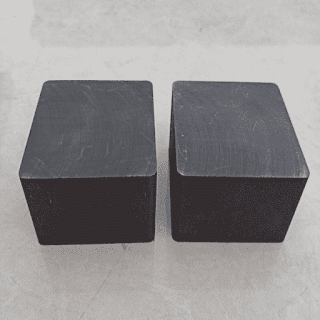Analysis of carburizing principle of carburizing agent
The crystal structure of C in the carburizing agent can be divided into amorphous structure and crystal structure. According to the morphology of C in the carburizing agent, it can be divided into graphite carburizing agent and non graphite carburizing agent. Graphite carburizers generally include non graphite carburizers that break the atomic structure of the original carburizers at high temperature and then rearrange the atomic covalent bonds. The graphitized carburizers form a layered hexagonal crystal structure.
Moreover, C in the carburizing agent is mainly dissolved in the molten iron through dissolution and diffusion. The graphite in the graphite carburizing agent can be directly dissolved in the molten iron, while the direct melting phenomenon of the non graphite carburizing agent basically does not exist. As time goes on, C gradually diffuses and dissolves in the molten iron. The dissolution of C in molten iron is controlled by the mass transfer of C in the liquid boundary layer on the surface of solid particles. There is a thin layer of viscous gray matter on the surface of the carburizing agent. This layer of gray matter is very resistant to high temperature, which is also an important reason for affecting the diffusion speed. The higher the temperature in the graphitization process, the more this layer of gray matter will be removed, which can accelerate the diffusion speed.

Through experiments, it is found that the higher the graphitization degree, the faster the diffusion and direct melting. The common graphitization carburizing agent is graphitized at 2600 degrees, and the rapid melting carburizing agent is graphitized at a high temperature of 3200 degrees to achieve complete graphitization and remove the gray layer on the surface.
In order to shorten the time for casting enterprises to fine tune carbon and facilitate the operation, the quick dissolving carburizing agent is added with the quick dissolving agent to speed up the melting and absorption. After the molten iron is melted in the electric furnace and the slag is removed, it can be completely melted by adding it to the molten iron surface for about 1 minute.

Comments
Post a Comment